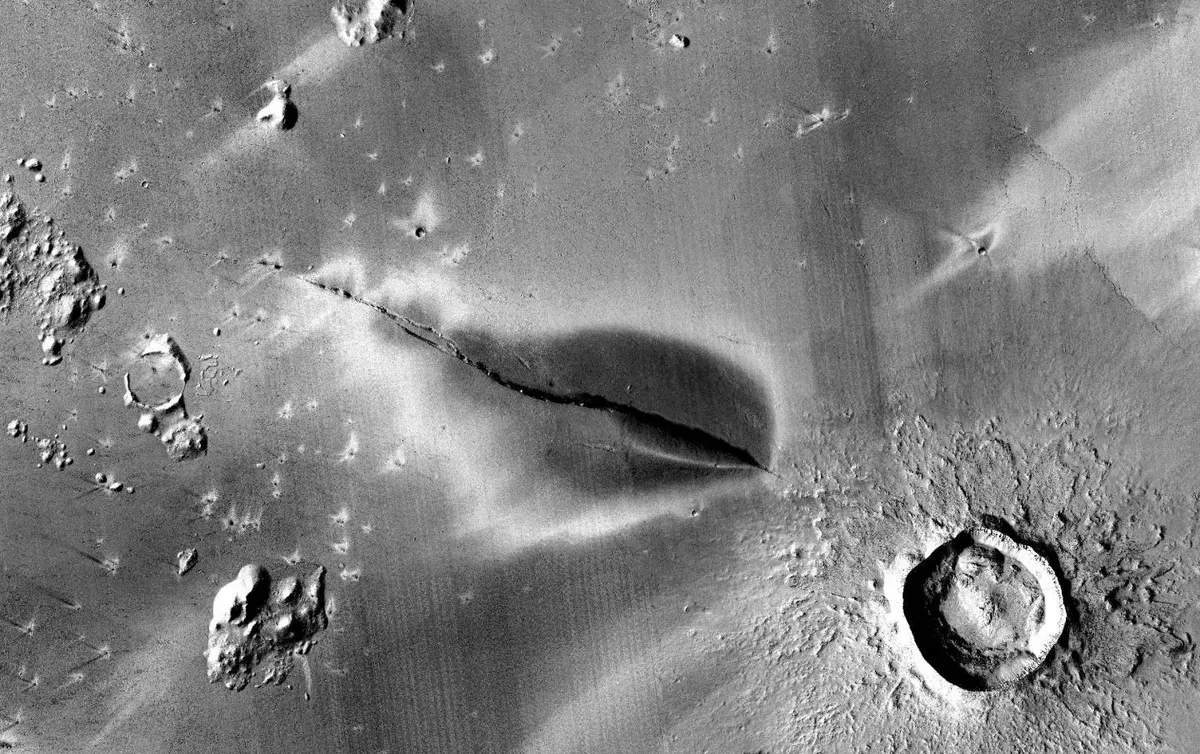Volcanoes on Mars could’ve erupted as recently as 50,000 years ago, a study carried out using data from satellites orbiting the planet by researchers at the University of Arizona has found.
Previous studies have suggested that most of the volcanic activity on the Red Planet occurred between 3 and 4 billion years ago, with some outlying eruptions continuing in isolated locations until about 3 million years ago.
“This may be the youngest volcanic deposit yet documented on Mars,” said lead study author Dr David Horvath, who did the research as a postdoctoral researcher at the University of Arizona and is now a research scientist at the Planetary Science Institute. “If we were to compress Mars’ geologic history into a single day, this would have occurred in the very last second.”

The volcanic deposit was found in Elysium Planitia, a smooth, flat plain located just north of the equator. The eruption produced an 11km-wide, smooth, dark deposit surrounding a 32km-long volcanic fissure, and could’ve spewed ash and rock up to 10km into the Martian atmosphere.
The composition and distribution of the material deposited match what would be expected for a pyroclastic eruption - an explosive eruption of magma driven by expanding gasses similar to what happens when you open a bottle of sparkling wine.
Some hallmarks of the volcanic deposit also raise the possibility of conditions capable of supporting microbial life existing below the surface of Mars.
“The interaction of ascending magma and the icy substrate of this region could have provided favourable conditions for microbial life fairly recently and raises the possibility of extant life in this region,” Horvath said.
The site of eruption is around 1,600km from NASA's InSight lander, which has been studying seismic activity on Mars since 2018.
Read more about Mars:
- Why it’s critical the first crew on Mars contains a woman, according to former astronaut Dr Kathy Sullivan
- Mars Ingenuity Helicopter: Why drones are the future of space exploration
- 11 history-making Mars Perseverance rover moments, captured on camera
Further study is required to determine the exact nature of the eruption, but two Marsquakes, the Martian equivalent of earthquakes, were found to originate around the Cerberus Fossae system of fissures found within the Elysium Planitia region. Recent work has suggested the fissures could be the result movement of magma deep underground.
“The young age of this deposit absolutely raises the possibility that there could still be volcanic activity on Mars, and it is intriguing that recent Marsquakes detected by the InSight mission are sourced from the Cerberus Fossae,” Horvath said.
The eruption may also have been due to a build-up of gases already present in the magma, or could have happened when the magma came into contact with permafrost, the researchers say.
It is also possible that the eruption was triggered by the asteroid impact that formed the nearby Zunil crater at about the same time, they add.
The volcanic deposit, along with ongoing seismic rumbling in the planet's interior detected by InSight, and possible evidence for releases of methane into the atmosphere detected by NASA's MAVEN orbiter, suggest that Mars is far from a cold, inactive world.
“This may be the most recent volcanic eruption on Mars, but I think we can rest assured that it won't be the last,” said study co-author Dr Jeff Andrews-Hanna, an associate professor at the University of Arizona. "All these data seem to be telling the same story, Mars isn't dead.”